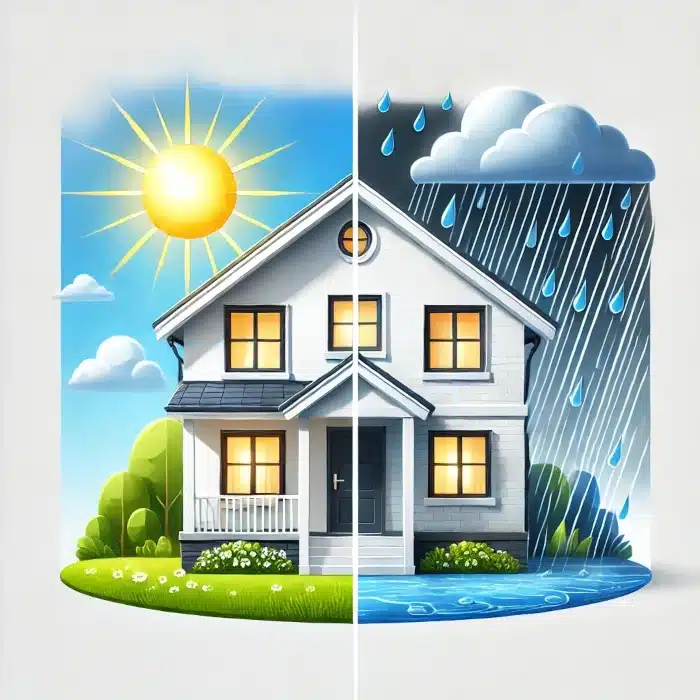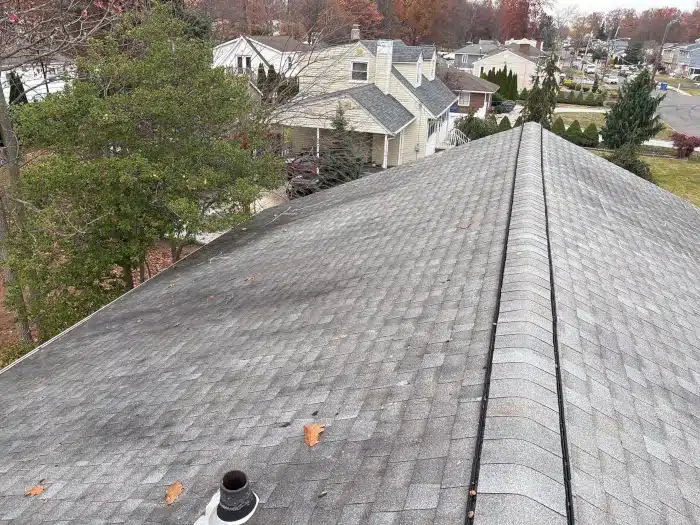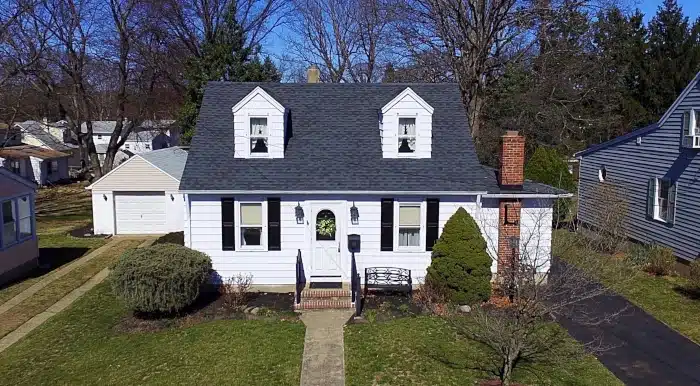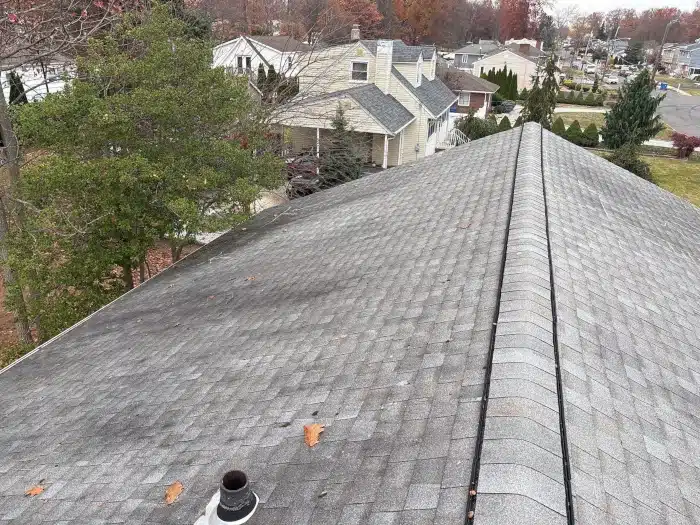Key Highlights
- It is important to know when to get a new roof. This can help protect your home and raise its value.
- The lifespan of your roof can change based on things like roofing material, the climate, and maintenance.
- Watch for missing shingles, water damage, and sagging. These are signs your roof is getting old.
- To help extend the life of your roof, have regular inspections, make timely repairs, and do proper maintenance.
- When it’s time for a roof replacement, think about material durability, cost, and energy efficiency. This can help you pick the best option for your home.
Introduction
Roof replacement is an important part of owning a home. Knowing when to replace your roof is key for keeping your home safe and valuable. This guide looks at what affects how long roofs last. It also points out the signs that mean it’s time for a replacement. Lastly, it covers the main things to think about when picking the right roofing material for your home.
How Often to Replace Roof: Understanding Roof Lifespan Fundamentals

Deciding how long a roof lasts is not just about checking a date; many things affect its life span. Some people think roofs can last for many years without problems, but this is not always true. The life span of a roof depends on several important factors, and proper maintenance is essential to help it last longer.
First, the type of roofing material used is very important. For example, metal roofs are usually stronger and last longer than asphalt shingles. Second, the local climate matters a lot. Roofs that face tough weather, like heavy rain, strong winds, or bright sunlight, often wear out faster.
Key Factors Influencing How Often to Replace Roof
Let’s take a closer look at the important factors that affect how long roofs last:
Local Climate: Your roof is exposed to the weather all year. Extreme heat can make some roofing materials break easily. Heavy rain might cause leaks and water damage. It’s essential to understand the climate in your area. This knowledge helps you choose the right roofing material and keep it maintained properly.
Roofing Material: Different roofing materials last for different amounts of time and need different levels of care. For example, asphalt shingles are popular for homes because they are affordable and easy to find, but they don’t last as long as metal or tile roofs. Metal roofs are very strong and handle tough weather well. On the other hand, tile roofs look nice and can last a long time, but they cost more up front.
Type of Roofing: Besides the material, the design of the roof also affects how long it will last. Steep roofs are common in places with a lot of snow, as they help shed water better, reducing the chance of damage. However, flat roofs are trendy for their modern look but require more maintenance to avoid water pooling and other issues.
Recognizing Signs of Roof Aging
A roof does not usually fall apart all at once. Instead, it gives several signs as it gets older. It’s important to stay alert and look for these signs. Finding them early can help you avoid expensive repairs later. Here are some clear signs of roof wear:
- Missing Shingles: Strong winds or regular wear can make shingles loosen or fall off. This can expose the under layer to water damage.
- Curling or Buckling Shingles: If shingles are curling at the edges or buckling in the middle, it usually means they are worn out or were not put on correctly.
- Water Damage or Leaks: Water spots on your ceiling or in the attic are serious issues. Leaks could come from damaged flashing, cracked shingles, or worn-out sealant.
Spotting any of these signs quickly is very important. It is best to reach out to a reliable roofing contractor to check the situation. Taking care of problems right away can help stop them from turning into big repairs or even needing a complete roof replacement.
Detailed Guide to Roof Maintenance for Longevity
Proper roof maintenance is important. It helps your roof last longer and can save you money. It’s not only about fixing problems when they happen. It’s also about taking care of your roof so little issues don’t turn into big ones.
Regular inspections and fixing small repairs quickly can really help. Having a regular roof maintenance plan lets you spot problems early. This ensures your roof works well for many years.
Regular Inspection and Maintenance Tips
Here’s how to make the most of regular roof check-ups:
Schedule Professional Inspections: A visual check from the ground can help, but having a professional inspect your roof once or twice a year is important. Experienced roofers can spot signs of damage that you might miss. This includes cracked or loose shingles, damaged flashing, and clogged gutters.
Address Small Problems Sooner Rather Than Later: Ignoring small problems may lead to big issues. A minor leak can turn into major structural damage if you don’t take care of it. This can shorten the life of your roof and lead to costly repairs.
Seasonal Maintenance Is Key: Make seasonal checks part of your routine. Remove debris and leaves from your roof and gutters, especially after storms or during the fall. Also, trim any overhanging branches that could damage your roof in strong winds.
Preventing Common Roof Damages
Preventing severe weather damage to your roof is best done with good maintenance and taking proactive steps:
Trim Overhanging Branches: Trees can be a big threat to roofs, especially during storms. Branches that hang over can scratch shingles. This can loosen or even knock them off. If branches break, they can cause even worse damage. By trimming trees regularly, you can reduce this risk.
Clean Gutters and Downspouts: When gutters and downspouts get clogged, they can’t drain water properly. This can lead to water collecting on your roof. Standing water can seep into your roof and create leaks, rot, and serious issues.
Ensure Proper Attic Ventilation: Heat and moisture can build up in your attic. This can shorten your roof’s life. Good ventilation allows air to flow, which helps control temperature and moisture. This stops problems like mold, shingle damage, and damage to the roof’s structure.
When Is It Time for a Roof Replacement?

Deciding when you need to replace your roof depends on various factors. The age of the roof is important, but there are other signs of damage you should pay attention to. If you ignore these signs, it could lead to more serious and expensive problems, which could put your home at risk.
Look for visible damage on the roofing material. If you see many missing, cracked, or curled shingles, it might mean you need a replacement. Also, watch for structural issues like sagging areas of the roof. These can show there is damage to the support system under the roof. Make sure to contact a good roofing professional for a complete inspection.
Identifying Critical Damage Indicators
In addition to how old your roof is, it’s important to spot signs of serious damage. These signs help you decide if it’s time for a roof replacement. Sometimes, simple fixes won’t work, and they could even cause safety risks.
One sign to look for is shingle granules in your gutters or downspouts. A few granules are normal, but if you see a lot, it means your shingles might be close to wearing out. Another sign is if you notice daylight coming through your roof boards in the attic. This means there are gaps or holes in the roofing material, which can let leaks happen.
Also, watch out for sagging or drooping in your roofline. This might mean that the structural parts are weak or damaged, and you will need a qualified professional to help quickly.
How Often to Replace Roof Guidelines
While damage plays a key role, the age of your roof is a primary factor in determining the need for replacement. Even with meticulous maintenance, every roof has a lifespan. Once this lifespan is nearing its end, replacement becomes necessary to avoid potential leaks, structural damage, and compromised energy efficiency.
The type of roof you have greatly influences its lifespan. Understanding the expected lifespan of your specific roof type can help you anticipate when replacement will be necessary. Here’s a general guideline for various roofing materials:
| Roofing Material | Average Lifespan |
| Asphalt Shingles | 15-30 years |
| Metal Roof | 40-70 years |
| Tile Roof | 50-100 years |
| Slate Roof | 75-100+ years |
Note that these are just average lifespans. Factors such as the quality of the materials used, weather exposure, and maintenance practices can influence the actual lifespan of your roof.
Choosing the Right Material for Your Roof Replacement
Choosing the right roofing material is very important when you get a new roof. It affects how well it works and how it looks. Each type of roofing material has its advantages and disadvantages related to cost, how long it lasts, energy efficiency, and style.
Think about what matters most to you and what you can afford. For example, if you want your roof to last a long time, you might look at durable materials like metal or tile. If saving energy is key for you, consider materials that reflect heat and can help lower cooling costs.
Comparing Lifespans of Different Roofing Materials
Asphalt shingles are a popular pick because they are affordable and easy to put on. Usually, they last between 15 and 30 years. However, architectural shingles last a bit longer since they are thicker and have a better design.
Metal roofs cost more at first, but they are very strong and can last 40 to 70 years or even longer. They save energy by reflecting heat away from the home, which helps lower cooling costs. Plus, metal roofs resist fire and can handle strong winds well.
Slate roofs are known for their classic beauty and can last over a hundred years if cared for properly. Their strength makes them a good choice for homeowners who want a long-lasting roof. Still, slate roofs are heavier and need special installation, which makes them more expensive.
Cost vs. Durability: What’s Best for Your Home?
Balancing cost and durability is important when you are replacing your roof. You want to get good value for your money and make sure your new roof lasts a long time. Some factors that matter are your budget, how long you plan to stay in your house, and the local climate. These things help you choose the best roofing material for your needs.
Asphalt shingles are usually the cheapest option to start with, but they only last about 15 to 20 years. This might mean you have to replace them sooner. On the other hand, metal and tile roofs cost more at first, but they can last for many decades. This makes them a better deal over time.
In the end, it is smart to talk to a roofing contractor. This expert can look at your specific needs, think about the local climate, and help you find roofing options that fit your budget and last well.
Conclusion
In conclusion, taking care of your roof is very important for keeping your home safe and valuable. Regular inspections and timely roof maintenance help a lot. You should also know the signs that your roof is getting old. It’s important to know when to replace your roof based on serious damage or its age. Choosing the right roofing material is a big decision that balances cost and long-lasting quality. If you want more help with roof maintenance or replacement, think about booking a free consultation with our experts. A well-maintained roof can give you comfort and security for many years.
Frequently Asked Questions
How can I extend the life of my roof?
To extend the lifespan of your roof, you need to take some proactive steps. Regular maintenance is important. This includes cleaning gutters, trimming trees, and fixing small problems right away. You should schedule annual check-ups with a local roofer or home inspector. They can help spot and fix potential issues. Proper maintenance is the key to having a long-lasting roof .For more detailed guidance, refer to the NRCA’s professional roofing guidelines.







